Image volcanic emission on Io
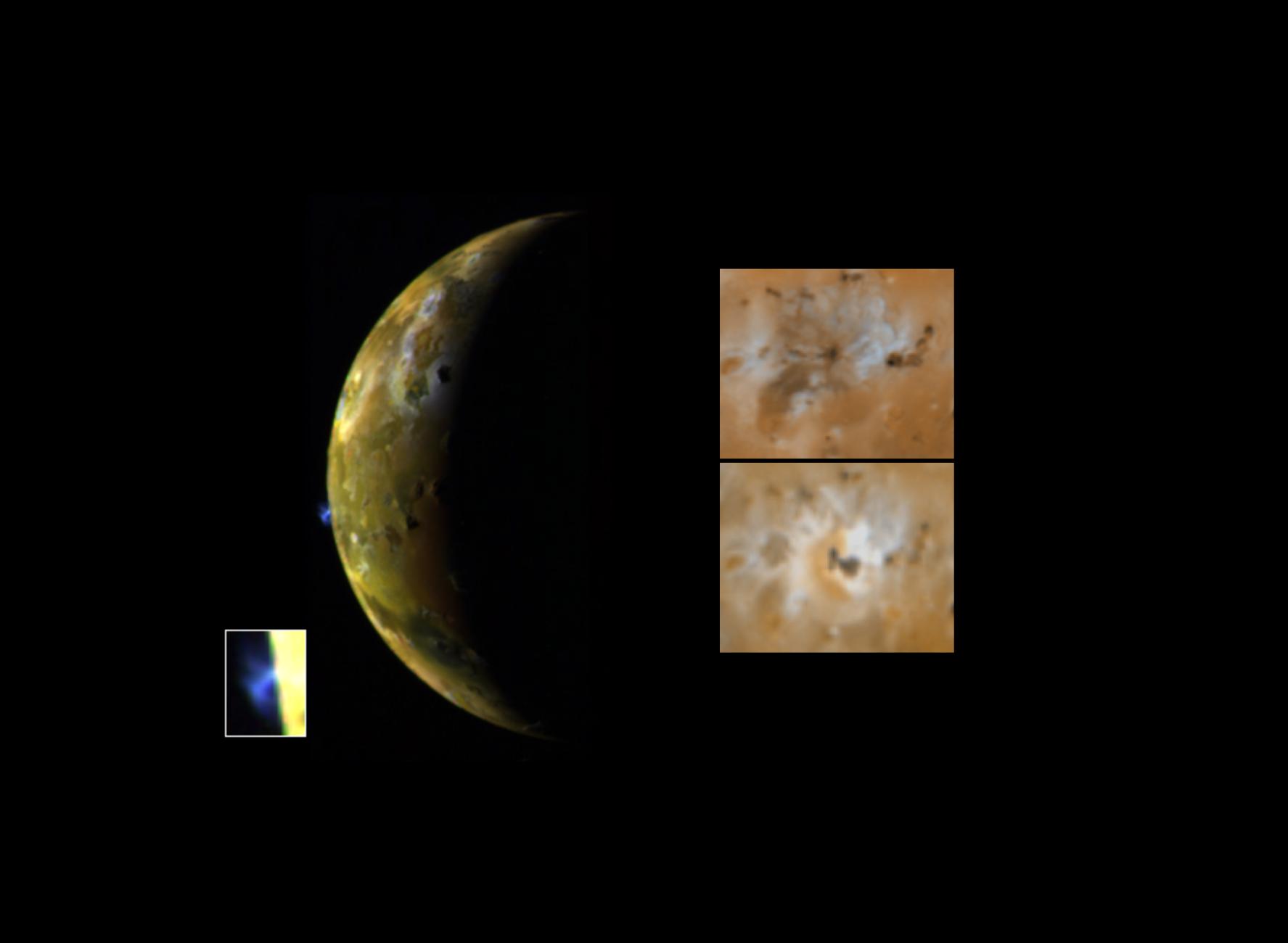 Io as viewed by the Galileo spacecraft. Note the volcanic plume at the limb.
Io as viewed by the Galileo spacecraft. Note the volcanic plume at the limb.
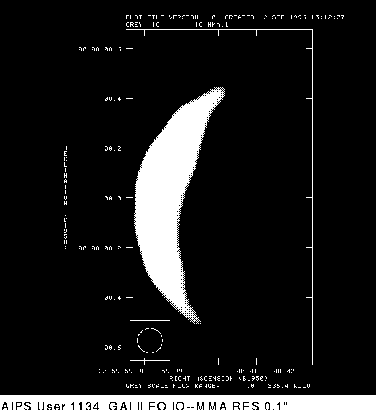 Io as viewed by the Galileo spacecraft, but convolved to the 0".1
resolution of the Millimeter Array at 1mm. Surface features are visible
but the volcanic plume does not appear.
Io as viewed by the Galileo spacecraft, but convolved to the 0".1
resolution of the Millimeter Array at 1mm. Surface features are visible
but the volcanic plume does not appear.
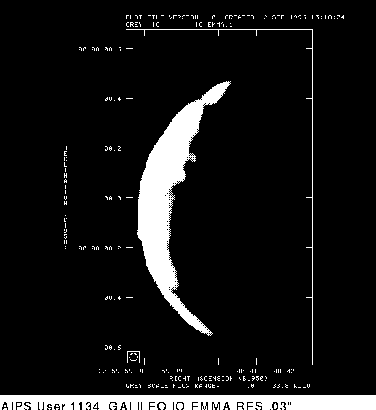 Io as viewed by the Galileo spacecraft, but convolved to the 0".03
resolution of the enhanced Millimeter Array at 1mm, with 10km baselines.
Surface features are nearly as striking as in the Galileo image, and the
volcanic plume is clearly visible. Note that the gases in the plume
include SO2 (c.f. LELLOUCH, E.; STROBEL, D. F.; BELTON, M. J. S.;
SUMMERS, M. E.; PAUBERT, G.; MORENO, R., Icarus 98, 271 (1992) for a
discussion
of Io's radio SO2 lines) and SO (c.f. ApJ459, L107)--an image in the
radio light of these lines would show
the plume as the brightest feature of the satellite. The brightness
temperature of the observed lines is tens of K, making observation a
cinch for the MMA.
Io as viewed by the Galileo spacecraft, but convolved to the 0".03
resolution of the enhanced Millimeter Array at 1mm, with 10km baselines.
Surface features are nearly as striking as in the Galileo image, and the
volcanic plume is clearly visible. Note that the gases in the plume
include SO2 (c.f. LELLOUCH, E.; STROBEL, D. F.; BELTON, M. J. S.;
SUMMERS, M. E.; PAUBERT, G.; MORENO, R., Icarus 98, 271 (1992) for a
discussion
of Io's radio SO2 lines) and SO (c.f. ApJ459, L107)--an image in the
radio light of these lines would show
the plume as the brightest feature of the satellite. The brightness
temperature of the observed lines is tens of K, making observation a
cinch for the MMA.

 Io as viewed by the Voyager spacecraft.
Io as viewed by the Voyager spacecraft.
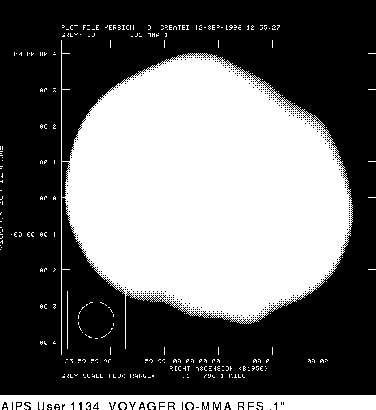 Io as viewed by the Voyager spacecraft, but convolved to the 0".1
resolution of the Millimeter Array at 1mm. Surface features are visible
at about the same level of detail as in the HST images.
Io as viewed by the Voyager spacecraft, but convolved to the 0".1
resolution of the Millimeter Array at 1mm. Surface features are visible
at about the same level of detail as in the HST images.
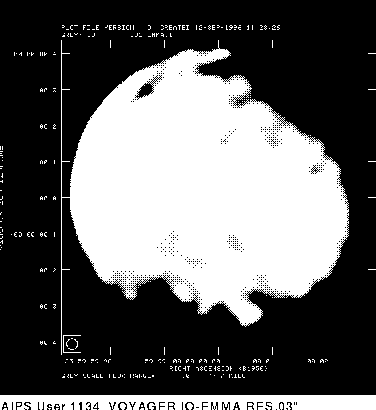 Io as viewed by the Voyager spacecraft, but convolved to the 0".03
resolution of the enhanced Millimeter Array at 1mm, with 10km baselines.
Surface features seen in the Voyager image are clearly recognizable.
Io as viewed by the Voyager spacecraft, but convolved to the 0".03
resolution of the enhanced Millimeter Array at 1mm, with 10km baselines.
Surface features seen in the Voyager image are clearly recognizable.

Back to the
Science Highlights Page


 A Project of the National Radio Astronomy Observatory
A Project of the National Radio Astronomy Observatory






